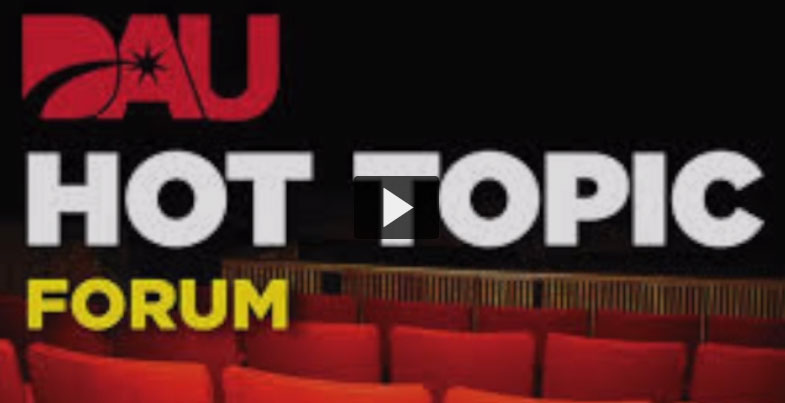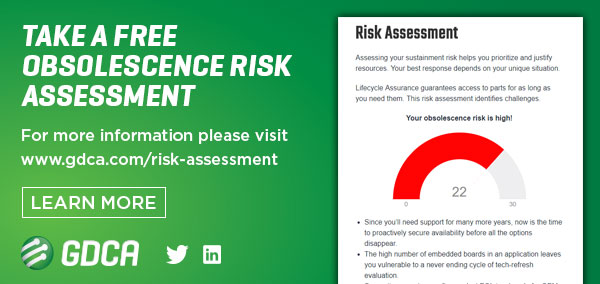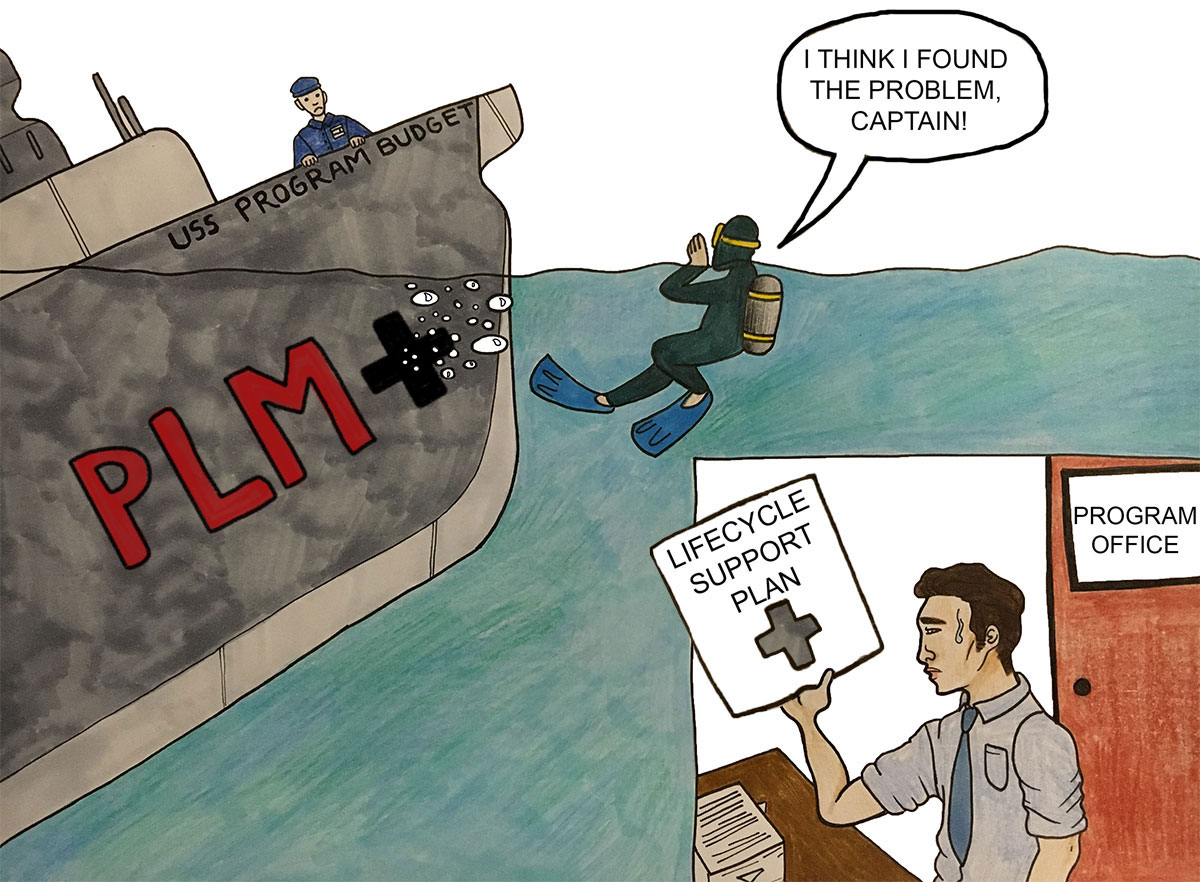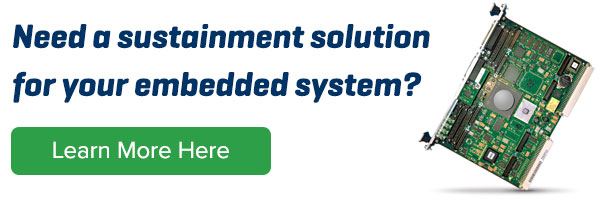Letter from the CEOLifecycle Assurance is the PLUS
Recently, I consulted with a business aircraft maker on an End-of-Life (EOL) crisis event his team was facing. A system supplier couldn’t find a handful of critical EOL’d electronics components. After some weeks of crisis meetings and a few cross-country flights, the supplier was “amazingly” able to find the parts. Crisis overcome.But even with a successful outcome, it’s a great example of the fundamental problem we all face concerning electronics obsolescence:
Fundamental changes in the marketplace have made old ways of sustaining older systems obsolete.
Thirty years ago, there were fewer COTs board competitors—meaning board Original Equipment Manufactures (OEMs) could EOL products and pressure customers to upgrade without much risk of a customer switching. However, today’s competitive landscape compels OEMs to respond to “another Last Time Buy (LTB)”—even though the opportunity cost makes the work unprofitable.
Twenty years ago, there was a less diverse set of active electronics components, and they were manufactured in volume for a long time, making it easier for board OEMs to find components on the grey market. However, in today’s M&A landscape where component EOLs and counterfeits run rampant, finding good parts bogs down every team involved in manufacturing, not just procurement.
Ten years ago, at the start of the Great Recession, there was a huge overcapacity in the marketplace, meaning board OEMs were desperate for every revenue dollar they could get. However, in today’s surging economy with pressure to quickly introduce A LOT of new products, the effort to quote low-volume RFQs and manage longevity agreements undermines most companies’ priorities.
Overreliance on these and other traditional reactive solutions guarantees the industry will continue to encounter these problems.
At GDCA, we’ve experienced our fair share of issues from our own overreliance on reactive solutions, which is why we’ve shifted our entire mind-set away from sustainment—and toward the idea of assurance.
Assurance recognizes that all program and product managers want from their suppliers is quality and affordability. Reactive solutions deliver the total opposite. Assurance programs focus on satisfying equipment programs’ longevity needs until the equipment is no longer needed. Reactive solutions focus on crisis events.
Product lifecycle management (PLM) doesn’t address longevity, but PLM “Plus” does. When it comes to effective PLM, Assurance is the Plus.
DAU Video

Managing a program is difficult—you worry about schedule, cost, and meeting the warfighter’s performance and readiness needs. The last thing you want is an obsolescence issue and to not be able to buy what you need. But it happens! Obsolescence issues are inevitable, and it doesn’t matter where you are in the life cycle.
Critical Thought: What is PLM+™ ?
PLM+ is GDCA’s targeted approach to legacy sustainment, developed over decades by working closely with board and application OEMs. The process offers a new organizational structure to legacy sustainment, a time-tested way of being prepared.
Traditional PLM (product lifecycle management) doesn’t address the intricacies of indefinitely sustaining legacy equipment after EOL. Traditional PLM leaves out several important steps, and by not being aware of what’s missing, buyers and customers are often left scrambling to solve avoidable fulfillment problems.
When it comes to obsolescence management, you need a new approach to sustain your systems if you or your customers cannot upgrade. By planning and budgeting for your lifetime needs in a totally different way, you will be better prepared to manage obsolescence risk.
PLM+ encompasses a suite of specialized capabilities: Legacy Manufacturing, Lifecycle Assurance, Lifecycle Planning, and Legacy Engineering, all designed to help you from beginning to end—complete product and program life cycle optimization and assurance.
Identifying the steps that are missing for you in traditional PLM will help you understand how PLM+ helps you to proactively manage the future of your boards and equipment.

Obsoletism

We’ve Been Busy!
US Air Force LifeCycle Industry Days (LCID)
This was our first time attending Lifecycle Industry Days, and it did not disappoint. As GDCA continues to create meaningful relationships regarding the proactive sustainment of embedded products that are critical to readiness, we welcome the connections and new perspectives on understanding “requirements and hot topics covering the entire acquisition life cycle” for the Air Force. We know our expertise is only enhanced by tackling some of the biggest issues in planning and maintaining products with long life cycles.

Aerospace Industries Association (AIA) Supplier Management Council
We were thrilled to be this year’s pen sponsor. General Dynamics hosted AIA’s annual Suppliers Management Council in Hilton Head, South Carolina, which included a keynote presentation by Mark Burns, president of Gulfstream and vice president of General Dynamics, and a tour of the Gulfstream Savannah facilities. As impressive as the 679,199-square-foot facilities are, so was the amount of thoughtful conversation regarding strategizing. The continued work and collaboration with supply chain representatives, companies, and government prime manufacturers to tackle issues that affect the aerospace and defense industries supply chain was both thought-provoking and beneficial for all involved parties.
DMSMS
If you missed us at DMSMS/DMC this year, you missed out on lasers.
GDCA was once again pen sponsors of the conference in Tampa, Florida. At one of our favorite conferences of the year, GDCA’s team was incredibly fortunate to have the opportunity to present three separate presentations, including CEO Ethan Plotkin’s presentation on “Remanufacturing COTS Electronics: Recreating Reliable Sources of Supply.” We also launched our free online mini Obsolescence Risk Assessment, a snapshot of the tools we use to determine the risk of embedded systems. This year our exhibition booth allowed us to get the word out on how GDCA can help establish a second source for EOL’d COTS boards. Overall, DMC/DMSMS is a very important conference for us, and we know that our talks with program managers and industry partners allow us to continue to expand the awareness needed to be proactive on embedded sustainment for military applications.
Upcoming Events
- March 14-15
NDIA Manufacturing Division Meeting
Washington, DC
|

